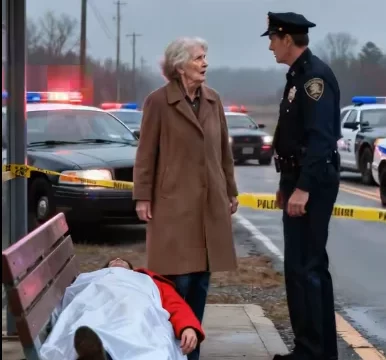Health officials in California have confirmed that a resident has tested positive for plague, a disease that many people associate with the distant past but which still occasionally appears in rare cases today. The individual is believed to have contracted the illness after being bitten by an infected flea while camping in the South Lake Tahoe area, a popular outdoor destination. News of the case has sparked curiosity and concern, with visitors and locals expressing surprise that plague still exists in the modern era.

One Lake Tahoe visitor summed up the general sentiment, saying, “I think it’s crazy. I didn’t even know the plague was still something that was going on. How is the person doing?” Fortunately, health officials report that the patient is at home recovering and is expected to be fine. To better understand the situation, infectious disease experts have explained how the plague spreads, why it still appears, and what people can do to protect themselves. Dr. Peter Chin-Hong, an infectious disease specialist at UCSF, explained that plague is caused by bacteria transmitted through flea bites, particularly fleas that live on rodents like squirrels and chipmunks.
While the disease is often thought of as a relic of medieval times, doctors emphasize that bubonic plague still exists today, though it is extremely rare. According to Chin-Hong, the United States sees only about seven cases per year, most of them in western states such as California, Arizona, Colorado, and New Mexico. This is a far cry from the Middle Ages, when poor sanitation, rampant rat populations, and uncontrolled flea infestations allowed plague to devastate Europe and claim the lives of an estimated 25 million people.
Thanks to modern sanitation, better public health systems, and antibiotics, the disease has largely disappeared, though isolated cases continue to occur around the world. Experts stress that while people should be aware of the risks, there is no need for panic. Dr. Melanie Ott, director of the Gladstone Institute and professor at UCSF, highlighted the importance of recognizing that outdoor activities like hiking and camping bring people into environments where rodents live. While the chances of exposure are slim, it is still possible.
“Many of us love to go camping. We have dogs. We love to go out and hike. Rodents in the area rarely but still do carry or are infected with the plague. And fleas from these rodents can come and bite us and transmit this disease. I think that’s what we have to be aware about, and we should not forget it, but we should not panic,” she explained. Ott reassured the public that antibiotics are highly effective in treating plague if used early. Symptoms typically appear one to two weeks after exposure and may initially feel like the flu, with fever, headaches, and muscle aches. However, what distinguishes plague from other illnesses is the swelling of lymph nodes, a hallmark sign of bubonic plague. Although the disease’s name and history sound alarming, medical experts emphasize that treatment outcomes today are overwhelmingly positive.
More than 90 percent of patients survive when they receive prompt care. Preventive measures are also straightforward and effective. Using insect repellent when outdoors, avoiding contact with dead rodents, and keeping pets from interacting with wildlife remain the most important steps. These precautions help reduce the already low risk of exposure. This recent case is not the first time plague has been detected in the Lake Tahoe area. The last reported case occurred five years ago, and before that, in 2015, two individuals contracted the disease after visiting Yosemite National Park.
These incidents serve as reminders that while plague is far from common, it still persists in certain environments, particularly in rural or mountainous regions where rodents and fleas are part of the ecosystem. The key difference today is that unlike the pandemics of the past, modern medicine has transformed plague into a disease that can be quickly identified, treated, and cured. Experts continue to urge vigilance, particularly for those who spend time outdoors, but they also reassure the public that the presence of plague does not pose the same catastrophic threat it once did.
The case in South Lake Tahoe highlights how diseases from centuries ago can still surface in modern America, but it also demonstrates the power of science and medicine to keep such risks in check. With awareness, prevention, and timely treatment, the plague is no longer a death sentence but rather a rare and manageable illness. For Californians and visitors alike, the message from health officials is clear: enjoy the outdoors, stay cautious, and remember that while the plague still exists in isolated cases, it is both treatable and preventable.





